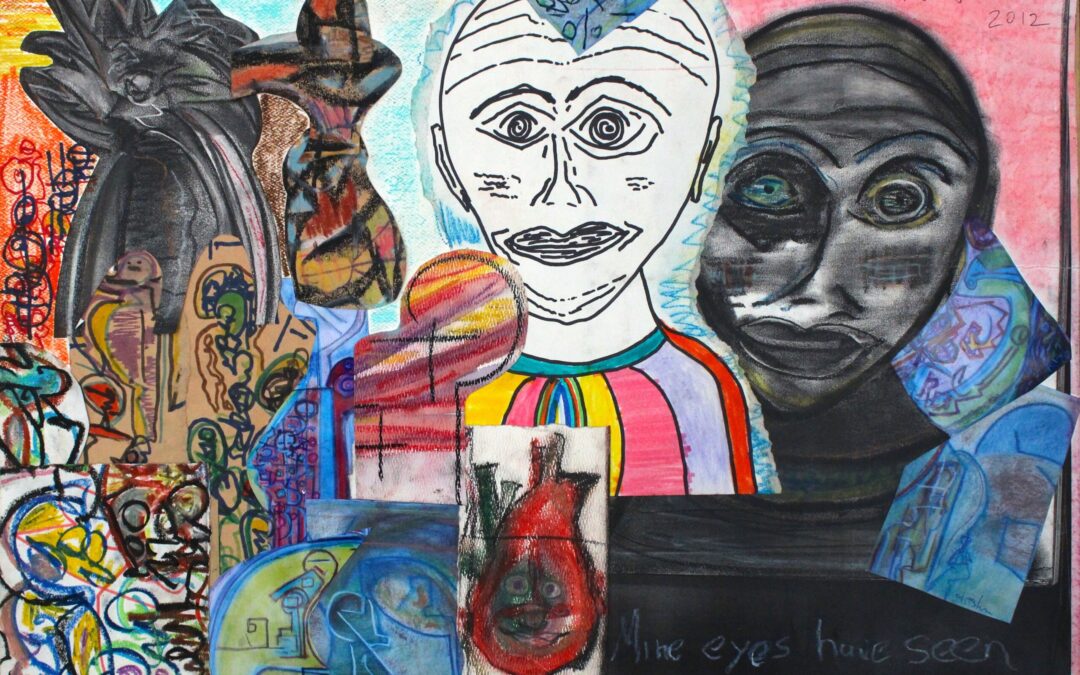We see a lot of people, homeless or not, that wind up in the prison system for committing crimes due to their mental illness. There are many factors that are involved in situations like these. So many questions need to be answered first before coming to the final decision of locking someone up in prison.
Formal meetings need to happen between the client and specific mental health professionals that deem them as having a mental illness, the court system will need to get involved to make rational decisions based upon the findings of the mental health professionals, cases need to be made and heard from all parties, etc.
The list goes on and this whole process can be very time consuming and mentally draining.

by Emiliano Bar on Unsplash
Rehabilitation Programs and California’s CONREP
I previously worked for a mental health facility located here in Los Angeles. My specific job function was located at a residential facility that housed many ex-offenders that were deemed “not guilty by reason of insanity.” Basically, these clients all had some sort of criminal past, from petty theft to murder. Some were even on death row at one point in their life.
With the help of the court system and the State of California CONREP (Conditional Release Program), these individuals were taken out of the state prison system or state mental hospital system and placed in this program. This program allows individuals to get “reacquainted” with society the best way they know how to. By providing them food and shelter in these residential facilities, they can be part of group and individual therapy, games, sports, make friends and do just about anything else that normal, everyday people do. Some are even provided on the job training skills.
This is a prime example of how using the justice system to help and not hinder people living with mental health challenges can make a big difference in not only their lives but the lives of others living in communities. It provides a different outlook on mental health and for ex-offenders.
My story leads me to the research that was found on this subject. A 2014 federal survey estimated that 43.6 million (18.1%) Americans ages 18 and up experienced some form of mental illness; 20.2 million adults (8.4%) had a substance use disorder; and of these, 7.9 million people had both a mental disorder and substance use disorder. An earlier report stated that 38% of homeless people were dependent on alcohol and 26% abused other drugs.
For individuals suffering from mental illness or substance abuse, having a roof over one’s head and some sort of economic stability is essential to avoid further psychological deterioration. That is where programs like CONREP come in. By having programs such as this one, it prevents further mental breakdowns that may eventually lead to more crimes.
The Criminalization of People Living With Mental Health Challenges
Society on a whole, however, has abandoned and marginalized these victims, and, worse, we have criminalized them, as I have mentioned above for the ex-offenders. To our collective shame, local and state prisons are now where most people with mental and substance disorders are being housed.
A 2014 study by the Treatment Advocacy Center and National Sheriff’s Association concluded there are ten times as many people with serious mental illness in our jails and prisons than in mental hospitals. That being said, a lot of mental hospitals have closed down due to loss of funding and personnel. Where else should these people go if something bad happens, such as a crime they commit? Right away, they most likely are hauled off to jail or prison.

by Hédi Benyounes on Unsplash
This has been occurring for decades now. It seems like even though we have made progress in a lot of areas of mental health, with new drugs, new systems put into place, mental health professionals, the need for “old-time” mental hospitals has gone away. Only the people with money and/or insurance benefit from the use of prescribed drugs and therapy from a professional.
But what about those out on the streets that cannot get a hold of benefits and proper healthcare? They are off of their meds, so this makes them more prone to committing a crime. The crime is what puts them in jail or prison, but the justice system must see where the background is coming from. Have they had a mental illness all of their life? Do they have a family history of mental illness? Have they committed any other serious crimes?
The Government’s Failure to Help

by Barbara Rosner
The 1977 California Determinate Sentencing Law eliminated rehabilitation as a goal of sentencing in favor of punitive practices that emphasized incarceration. Incarceration rates soared, resulting in overcrowding and deterioration of conditions in prisons and jails. This was made worse by the “war on drugs”, as well as the closure of the state mental hospitals, which led to the imprisonment of thousands upon thousands of mentally disordered people and those convicted of using drugs.
The state government failed to provide the funds for community mental health that were promised with deinstitutionalization, and public mental health programs have suffered repeated budget cuts ever since. Ultimately, the United States Supreme Court ordered California to reduce its prison population by more than 30,000 inmates due to unconstitutional prison conditions, many of whom were suffering from mental disorders.
In response, Assembly Bill 109 (implemented on Oct. 1, 2011) shifted responsibility for adult non-serious, non-violent, non-sex offenders to the county level. Unfortunately, the state did not provide adequate funding to treat this population, nor has it acted to prevent released prisoners from winding up back in county jails or state prisons.
According to a 2017 Stanford University report: “The long-running problem of mental illness in California’s justice system appears to be getting worse. Recent reforms to California’s criminal laws have greatly improved the state’s justice system. Overall crime rates in California have remained on a long-term downward trend.” Despite these significant legislative and administrative reforms, the prevalence and severity of mental illness among California state prisoners are dramatically on the rise. Over 30 percent of California prisoners currently receive treatment for a “serious mental disorder,” an increase of 150 percent since 2000.
But it is not just state prisons that have become repositories for our mentally disordered. Among the ten largest counties in California, 42 percent of defendants convicted and sentenced to prison in Alameda County have a mental illness, compared to 24 percent of defendants from Orange County. 24% of the city of Berkeley’s annual budget is allocated to the police and fire departments.
Though data is lacking as to how much of the police department’s time is spent on this population, it is estimated that 25 to 30% of all ambulance runs in the city of Berkeley deal with people who are suffering from either mental illness or substance abuse disorders, including alcohol. In a mental health crisis, people are more likely to encounter police than to get medical help.
These statistics can be said for just about anywhere in any state. If someone, per se, has a mental breakdown in a domestic dispute, most of the times the police are called and they get involved, as opposed to a social worker or psychologist. As a result, 2 million people with mental illness are booked into jails each year. Many of these people are chronically homeless, exacerbating the homelessness crisis.
Moving from Criminalization to Humanization
Society needs to start acknowledging that those who suffer from chronic mental illness or substance abuse are human beings just like anyone else. Being treated with dignity and respect and provided with the resources necessary to survive in our increasingly unequal society are key factors in overcoming this epidemic. But unfortunately, that is not how it is always seen in the eyes of the law. People are out to do their jobs and that is all they care about. Making an arrest seems to be more important for some police departments, to get their share of quota met than helping an individual with mental illness get the proper treatment.
What can we do as a society to help make this better and ultimately, find an end to it all? To begin with, the decriminalization of the use and possession of drugs would be a start toward fixing this humanitarian disaster. Though there are public programs supporting various community treatment options in California, they are vastly underfunded.
Research shows that community-based psychiatric treatment is frequently more effective and significantly less expensive than in-prison treatment at preventing crime and reducing incarceration rates for people with mental disorders. Our state and many others can and should provide adequate funding for a community-based continuum of care to help those who are victims of these disorders.
This continuum must include permanent supportive housing, job training, and subsidized employment, educational opportunities, highly skilled professional treatment specialists who will provide services in the natural environment of the consumers of such services, and integrated dual disorders treatment of mental illness and substance abuse simultaneously. Again, as I mentioned above, this is like the California CONREP program I worked with in conjunction with the mental health facility.
In the race for Assembly District 15, there is one candidate who demonstrates a deep understanding of these issues, as evidenced by both her platform and her actual work as a mental health specialist. Jovanka Beckles says: “One way to vastly reduce our prison population and the pressure on our court system would be to decriminalize possession of illegal drugs. I want to work with other legislators to study the feasibility and best practices to move in this direction. Drug possession and use should be responded to as health problems, not criminal acts. Rehabilitation, counseling, expansion of life opportunities and a health maintenance approach will reduce costs, improve outcomes, and be much more humane.” And she is exactly right in saying this.
We need more politicians to take a stance for mental health. That is the only way for things like this to get passed by Congress, the Senate, the House of Reps, etc. In campaign speeches, she has called for dramatic reforms in the state prison system. She has made it clear that state prisons are inappropriate places to treat mentally disordered individuals, and incarceration worsens their mental illness. She has worked as a Richmond City Councilwoman to set up mechanisms to help individuals returning from incarceration productively to re-enter their communities.
In closing, I think my experience in working for the mental health facility that provided a program for individuals to re-enter their communities, as Jovanka Beckles points out above, helped me realize that there are many positives and initiatives out there that are being made for individuals living with mental illness to be on the “right track” again. We can only hope it will get better with time. Funding is what we need most of all to make things happen!

